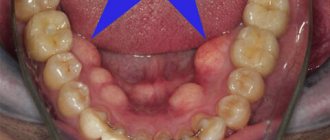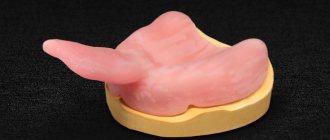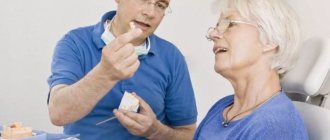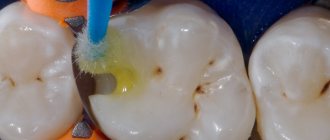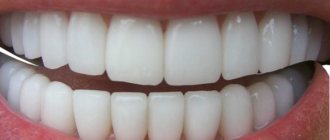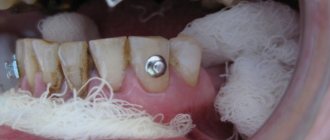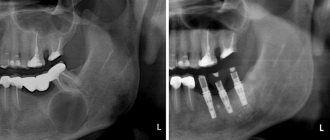The manufacture of replacement structures, or dentures, is a task carried out by a dental technician. In this case, one of the key elements that ensures an accurate representation of the features of the anatomical structure is an impression - a copy of the jaw row, which is a kind of “sketch”, is used to reflect elements that need correction. The instruments used to obtain it are individual impression trays.
General overview
Making an individual tray is a procedure, the need for which is determined by the specific development of the dentofacial apparatus of the patient who has applied for dental prosthetics services. The product completely covers the area where the prosthesis is required and is located in the area of transitional folds of the mucous membrane and the sublingual line.
The term "cast" or "impression", regularly used by dentists, is used to describe a prototype of the jaw, which is made using plaster or silicone material. An individual tray in this case is an orthopedic instrument designed to fix these casts. Moreover, individuality means manufacturing and use for only one patient, while standard models involve repeated use, which often negatively affects the quality of the finished prosthesis.
The term "impression", which is quite common in dentistry, is usually used to describe a positive, relief prototype made of plaster or silicone. The formulation “taking an impression of the dentition” can be considered as a definition that combines two procedures: taking an impression and forming a model.
An individual tray in dentistry is used to take two types of impressions:
- Working, or precision – precise impressions used to create functioning replacement structures installed on a permanent or removable basis;
- Auxiliary - as the name implies, this group combines all additional impressions that eliminate information gaps and make it possible to clarify the specifics of the occlusal relief to improve the quality of wearing the prosthesis.
As an alternative, the use of occlusal recorders is allowed, the task of which is to functionally complement and combine these types of impressions. If there are a sufficient number of surviving units, their use is not always advisable, but the desire to achieve optimal occlusion and shorten the adaptation period are good reasons for using recorders.
Based on the technique of designing the marginal areas, anatomical and functional impressions are distinguished, however, it is quite difficult to establish a clear line of differentiation between them. Functional variation involves the use of clarifying movements of active and passive properties, allowing one to obtain additional information necessary for the formation of a prosthetic system. At the same time, the use of anatomical impressions is relevant in the manufacture of fixed structures, for which the specific structure of the tissue of the prosthetic bed is of particular importance.
The difference between an impression and a cast
A dental impression and an impression are completely different structures, but they are sometimes confused. An impression is a negative representation of the hard and soft tissues of the jaw arch. It is done by the dentist during the patient’s appointment to transfer the data to the laboratory to the dental technician.
The impression is made in the laboratory by a worker who will create the necessary structures. Casts are a model of the teeth and gums made from plaster. Working with such models allows you to most accurately recreate the missing units or parts thereof.
Indications
Clinical situations in which it may be necessary to take an impression with a custom tray include:
- Partial or complete adentia, that is, loss of one or all elements of the dentition;
- The need to take accurate impressions that show in detail the structural features of the prosthetic bed;
- Planning the use of an impression to create a removable or bridge-type prosthetic structure, as well as for the manufacture of artificial crowns for implants;
- Deformation of the jaw structure, excluding the possibility of using a regular spoon.
Varieties
Dental stamps are divided into working, auxiliary and occlusion recorders. The first option is the most important and accurate prints, which show the whole picture of both jaws. With their help, working models are then made to recreate the patient's jaw in the laboratory.
It is with these structures that all subsequent work is carried out. The latter are created as additions to workers and carry information about residual parts. What was not taken into account in the first version is present on these stamps.
Using an auxiliary form, you can see the relief of the occlusal surface of the antagonists. This is important when working as a technician and, based on the clarified data, working models are edited and supplemented.
Occlusion recorders show what is not taken into account by any of the above designs. If there are enough antagonists, this option can be skipped, which is what most dentists do. However, microscopic occlusion recorders can improve the quality of the structures created. This approach will allow you to skip the fitting process when installing the prosthesis and will increase the percentage of speed of adaptation.
Manufacturing methods and materials
In modern dentistry, a variety of materials are used to make custom trays, including wax, polymers, rubber, and even metal. To obtain high-quality prints, the preferred option is to combine materials with different viscosity parameters. The high-viscosity formulation provides sufficient rigidity, while fine-grained correction materials improve imaging accuracy. Standard protocols also provide for the possibility of three-phase (the number of phases means the number of compounds) impression taking, with the addition of medium-viscosity material.
Manufacturing stages
To obtain two-phase impressions, a one- or two-step approach is used. In the first case, an individual tray is used for simultaneous application of both compositions, while the corrective mass can also be applied to the surface of the tissue area of the prosthetic bed - followed by indentation of the element. The two-stage method differs in the number of placements of the spoon in the oral cavity - in the second case, the instrument is used twice, first with the base material and then with the corrective material. Practice shows that such an approach provides an accurate result, but leaves the possibility of making a technical error, which is practically impossible to identify before manufacturing a replacement structure.
Individual impression trays
Such structures are made in a dental office or in a laboratory based on an auxiliary template. As a rule, they are used to create dentures for edentulous patients. An individual tray serves as the basis for the impression, and the composition with a low viscosity index allows you to convey the relief of the gums with maximum accuracy.
Despite the high softness and thinness of the layer of corrective composition, the finished impression is of high quality. The exclusion of obvious undercuts and relief minimizes the thinning of the material after hardening. Deformation when removing the spoon is also minimized.
Individual designs are used in the field of removable prosthetics, as well as when working with prosthetics based on the installation of implants. The structural difference between orthopedic devices based on implants and human teeth is the complete lack of mobility of the former. If mobility does occur, it is practically unnoticeable, so minimal inaccuracies are allowed when working with fixed prostheses, but they should not exist when making implant prostheses.
For implantology, it is important to obtain a reliable impression, so it is advisable to use an individual impression tray, which minimizes the likelihood of deformation of the correction mass.
Installation steps
This tray is a jaw impression, as it is made based on the results of scanning and computer modeling. Therefore, the following steps are performed first:
- preliminary inspection, cleaning from plaque and stone;
- sanitation, treatment of oral diseases;
- removal of destroyed units, removal of damaged parts of the tooth;
- with complete edentia, exostoses are cut out from the jaw.
The working impression is made only after the individual dental tray is ready. To do this you need to complete the following steps:
- the impression mass is mixed and placed in a tray (the time of its use is limited, so the work is completed quickly);
- the design is inserted into the oral cavity, the fitting is careful;
- you need to hold the mass in the oral cavity for about four to six minutes, this forms an impression and fixes the bite;
- the edges are adjusted, then the unit is removed by the handle;
- this should be done in one motion so as not to lubricate the mass and cause deformation;
- the model is removed, washed in running water, and soaked in a special composition for further work.
You can start creating prosthetics thirty minutes after the prints are ready. In order for the resulting model to be accurate, the Patient is required to perform the following simple actions:
- removal of saliva, if swallowing is difficult, the doctor uses special instruments;
- The mouth should be opened wide and held in this position for a couple of minutes;
- During the hardening process, you need to lick your upper lip and touch the inner surface of your cheeks with your tongue.
Such simple steps make the fit complete, which has a positive effect on the quality of the resulting print.
Prices
Taking an impression with an individual tray is inexpensive and depends on the following parameters:
- methods and materials used;
- difficulty in taking an impression;
- features of the work.
Usually the prices are low and are included in the cost of implantation. The doctor will be able to name the cost after the initial examination, so you need to visit the clinic for a consultation, choosing methods for restoring the rad and determining prices.
About the clinic
Magenta Dental offers a wide range of services to restore functionality and aesthetics, including prosthetics. Patients are provided with the following benefits:
- services of dentists specializing in various fields of dentistry;
- an integrated approach, including diagnosis and preparation;
- comfortable reception conditions and attention to everyone;
- use of certified materials and special equipment;
- affordable prices, guarantee for work performed;
- no queues, possibility of making an appointment by phone.
To receive information about the preparation and prosthetics procedure or make an appointment, leave a request on the website. You can also call from 09.00 to 21.00 and consult with our managers on all treatment issues of concern.
Results and discussion
A study of chewing efficiency in patients of the 1st group showed that their chewing efficiency has a positive trend, reaching maximum values (65%) by the end of the 1st month of using dentures. The maximum value of chewing efficiency in persons of group 2 was 77%.
Dynamometric comparison of the degree of fixation of prostheses when applying a horizontal load showed their maximum and significant increase by the 30-35th day of using the prostheses. The opening force of the peripheral valve in patients of group 2 was 2520–3710 g in the upper jaw and 2340–2520 g in the lower jaw in any zone of load application. In patients from group 1, the maximum fixation value was 2270–3190 and 2150–2270 g in the upper and lower jaws, respectively.
A study of the timing of adaptation to dentures in patients showed that complete adaptation, which means the absolute restoration of chewing function, in patients from group 2 occurred within 30-35 days, and in group 1 - after 35-40 days of use.
